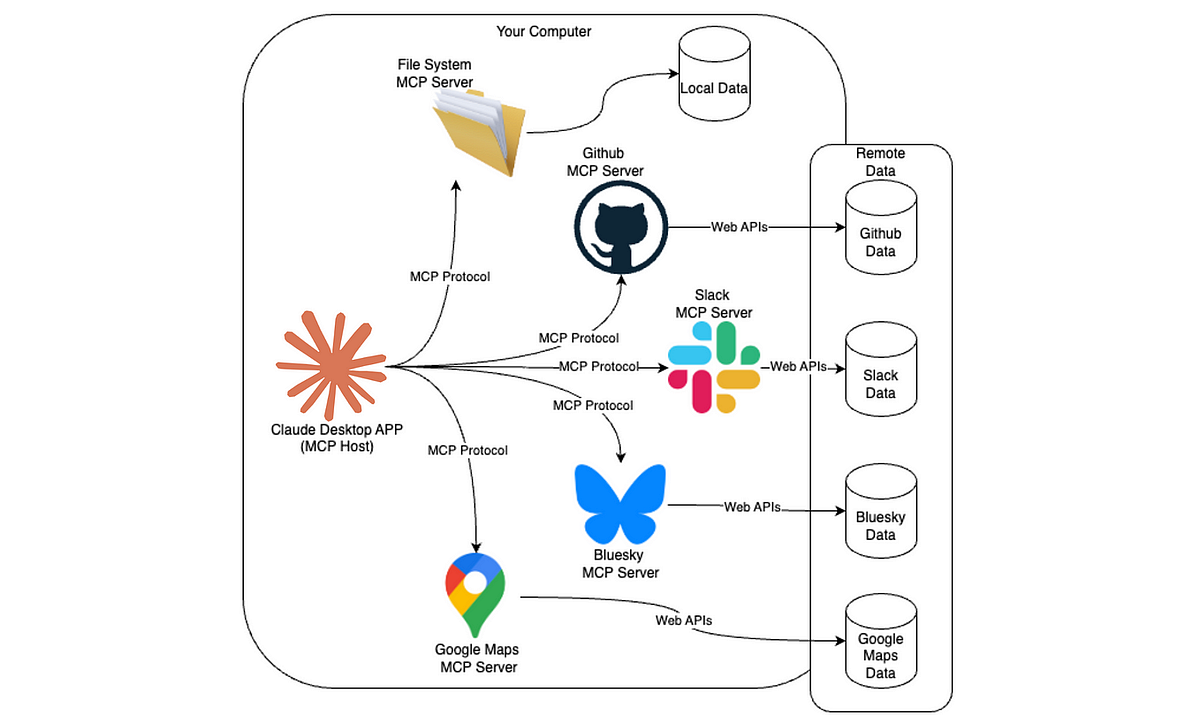Key Performance Indicators (KPIs) for Monitoring Your Agency’s Growth and Success
Share now

In the dynamic world of business, staying ahead of the competition and achieving sustained growth requires constant monitoring, analysis, and strategic decision-making.
This is where Key Performance Indicators (KPIs) come into play.
KPIs are quantifiable metrics that provide valuable insights into an agency’s performance, helping leaders and teams understand their progress toward achieving specific goals. From financial to operational aspects, KPIs are essential in gauging an agency’s success and guiding its growth trajectory.
At 8 Figure Agency, we understand the significance of KPIs in shaping the success of agencies. As a partner in your journey to scale to 8 figures, we provide comprehensive solutions tailored to your needs.
In this blog post, we’ll delve into the world of KPIs for marketing, discussing their importance, how to set them, best practices for monitoring, and much more.
So let’s embark on this data-driven journey together!
Setting KPIs
Determining the Right KPIs for Your Agency
Selecting the right marketing KPIs is a crucial step in effectively monitoring your agency’s performance. While the specific KPIs will vary based on the nature of your business and its goals, some universally valuable indicators apply across industries. Examples include Revenue Growth Rate, Customer Acquisition Cost (CAC), and Net Promoter Score (NPS).
Factors to Consider When Setting KPIs
When setting marketing key performance indicators, it’s essential to consider several factors that influence your agency’s success through various marketing channels.
These factors include:
- target or niche market
- business model
- competitive landscape
- and overarching business strategy.
By aligning your marketing KPIs with these factors, you ensure that the metrics being monitored accurately represent your agency’s growth journey.
At 8 Figure Agency, our experienced team collaborates with you to understand your unique business needs, enabling us to devise KPIs that support your agency’s success.
Understanding the Smart Approach to KPIs
The Smart Approach is a widely adopted framework for setting effective KPIs. SMART stands for Specific, Measurable, Attainable, Relevant, and Time-Bound. By adhering to these principles, your agency can develop KPIs that are both meaningful and actionable.
To illustrate the SMART approach’s impact, let’s consider an agency seeking to improve its online presence through marketing campaigns.
A SMART KPI for this agency could be to increase website traffic by 20% within the next six months.
This KPI is Specific (increase website traffic), Measurable (by 20%), Attainable (given the available resources), Relevant (tied to improving online presence), and Time-Bound (within six months).
Financial KPIs
Revenue Growth Rate
The Revenue Growth Rate is a fundamental financial KPI that tracks an agency’s revenue increase over a specific period. This metric is pivotal in understanding your agency’s ability to generate income consistently.
(Revenue month B – revenue month A) / revenue month A x 100 = revenue growth rate
For example:
($10,000 – $4,000) / $4,000 x 100 = 150%
By calculating the percentage change in revenue from one period to another, you gain insights into your agency’s financial health and growth trajectory.
Profit Margin
Profit Margin is a critical financial metric that reveals the efficiency of your agency’s operations.
(Revenue – Total Costs) / Revenue * 100
For example:
($10,000 – $8,000) / $10,000 x 100 = 20%
It represents the percentage of revenue that becomes profit after deducting all costs and expenses. A high-profit margin indicates effective cost management and an agency’s ability to generate substantial returns from its business activities.
Return on Investment (ROI)
Return on Investment (ROI) is a vital metric that assesses the profitability of specific investments or marketing campaigns.
(Net Return on Investment/ Cost of Investment) x 100%
For example:
($10,000 / $2,000)x 100 = 500%
By comparing the gain or loss from an investment relative to its cost, ROI offers valuable insights into the effectiveness of your agency’s initiatives.
Marketing KPIs
Lead Generation Rate
The Lead Generation Rate measures the number of sales or marketing-qualified leads generated within a specific time frame. This KPI reflects the effectiveness of your marketing strategy in attracting qualified leads or clients.
Number of new customers / Total number of leads received
For example:
10/20 = 0.5
By continually monitoring lead generation, your agency can adapt its marketing campaign and strategies to improve overall lead quality and quantity.
At 8 Figure Agency, we take a data-driven approach to enhance lead generation for our clients. Our tailored marketing solutions focus on attracting high-quality marketing or sales-qualified leads, ensuring that your agency experiences consistent growth.
Website Traffic
Website Traffic is a crucial metric that gauges the number of visitors to your agency’s website. Monitoring website traffic provides insights into the effectiveness of your online presence and the efforts of your marketing team. Analyzing traffic trends can help identify opportunities for optimization and expansion.
Cost per Acquisition (CPA)
The Cost per Acquisition (CPA) is a marketing KPI that measures the average cost incurred to acquire a new customer or client. A low CPA indicates efficient marketing and customer acquisition strategies, which are vital for driving profitability and growth.
CPA = Ad Spend ÷ Conversions
or
CPA = CPC ÷ Conversion Rate
Conversion Rate
Conversion Rate is a pivotal marketing KPI that measures the percentage of website visitors who complete a desired action, such as making a purchase or filling out a contact form. By optimizing conversion rates, your agency can maximize the value of its website traffic and marketing efforts.
Conversion Rate = Total number of conversions / Total number of leads * 100
Sales KPIs
Sales Growth Rate
The Sales Growth Rate is a vital metric that assesses your agency’s revenue growth over a specific period. By monitoring this KPI, you gain valuable insights into the effectiveness of your sales strategies and identify potential areas for improvement.
SG Rate =(Current Period Sales−Prior Period Sales)/Prior Period Sales∗100
Sales Per Representative
Sales per Representative is a key performance indicator that evaluates individual sales team members’ alignment and effectiveness. By tracking this metric, you can identify top-performing representatives and provide targeted training and support to those who may be underperforming.
Average Deal Size
Average Deal Size is a critical metric that measures the average value of each sales transaction. Monitoring this KPI can help your agency identify opportunities to upsell, cross-sell, or optimize pricing strategies for greater profitability.
Sales Funnel Conversion Rate
The Sales Funnel Conversion Rate is a key metric used by the sales and marketing team that tracks the percentage of leads that progress through the sales funnel and ultimately convert into customers. This KPI highlights the effectiveness of your sales process and indicates the potential for growth and increased revenue.
(number of contacts in the later stage of the funnel / number of contacts in the earlier stage) * 100
Customer Service KPIs
Net Promoter Score (NPS)
Net Promoter Score (NPS) is a crucial metric that measures customer loyalty and satisfaction. It gauges how likely your customers are to recommend your agency’s products or services to others. A high NPS indicates strong customer relationships and can lead to increased customer lifetime value, customer retention, and referrals.
NPS = % promoters – % detractors
Customer Satisfaction Rate
Customer Satisfaction Rate is a vital metric that directly reflects how content your customers are with your agency’s products or services. By regularly monitoring this KPI, you can identify areas for improvement and e nhance the overall customer experience.
(Positive responses / Total Response ) * 100
First Response Time
First Response Time measures the average time it takes for your agency to respond to customer inquiries or support requests. This KPI is crucial in maintaining positive customer experiences and retaining clients.
Average Resolution Time
Average Resolution Time is a pivotal metric that tracks the time it takes to resolve customer issues or concerns. By minimizing average resolution time, your agency can improve customer satisfaction and strengthen its reputation.
Operational KPIs
Employee Productivity Rate
Employee Productivity Rate measures the efficiency and effectiveness of your agency’s workforce. It evaluates the output and performance of employees and can provide insights into training needs or resource allocation.
The total output of workers / Hours worked
Turnover Rate
Turnover Rate measures the percentage of employees who leave your agency within a specific period. A high turnover rate can indicate potential issues within your agency, such as employee dissatisfaction or organizational challenges.
You need to leverage the best employee retention strategies to keep your employees engaged and motivated.
The number of terminates during a specific period / number of employees at the beginning of that period
Average Response Time
Average Response Time, in an operational context, measures the time it takes your agency to respond to internal inquiries or requests. By optimizing response times, your agency can streamline its processes and foster a more efficient work environment.
Project Completion Rate
Project Completion Rate evaluates the percentage of projects or tasks completed within the agreed-upon timeframe. This KPI provides valuable insights into your agency’s project management efficiency and overall productivity.
Reporting and Analyzing KPIs
KPI Reporting is a crucial process that involves collecting, analyzing, and presenting performance data in a meaningful way. Regular KPI reporting enables your agency to stay informed about progress and marketing budget, identify trends, and make informed decisions.
At 8 Figure Agency, we emphasize the significance of data-driven decision-making. Our comprehensive data reporting services provide you with valuable insights, empowering you to steer your agency toward sustained growth.
Analyzing KPIs
Analyzing KPIs involves a careful examination of performance metrics to identify patterns, strengths, and areas for improvement. By thoroughly analyzing your agency’s KPIs, you can pinpoint specific actions needed to boost performance and drive growth.
Making Informed Decisions Based on KPIs
Effective KPI analysis leads to informed decision-making, enabling your agency to take proactive steps toward achieving its goals. By leveraging the insights derived from KPIs, you can align your strategies with your agency’s objectives.
Common Mistakes in KPI Monitoring
Setting Too Many KPIs
One of the most common mistakes in KPI monitoring is setting an excessive number of metrics. This approach can lead to data overload and a lack of focus on the most critical indicators. To avoid this pitfall, it’s essential to prioritize a select few KPIs that align with your agency’s objectives.
Focusing Solely on Short-Term KPIs
While short-term KPIs are essential for immediate progress, focusing solely on these metrics may hinder your agency’s long-term growth. It’s crucial to strike a balance between short-term gains and sustainable, long-term success.
Overlooking Non-financial KPIs
Financial KPIs are undoubtedly critical, but agencies must not overlook non-financial KPIs. Metrics related to customer satisfaction, employee engagement, and managerial efficiency play a significant role in shaping your agency’s overall success.
Failing to Adjust KPIs Over Time
As your agency evolves, so should your KPIs. Failing to adjust and adapt your metrics over time can lead to outdated performance evaluations and missed growth opportunities. It’s essential to regularly reassess and fine-tune your KPIs to align with your agency’s changing goals and strategies.
Integrating KPIs Into Business Strategy
Aligning KPIs With Business Goals
KPIs are most effective when directly aligned with your agency’s business goals. By integrating KPIs into your overall business strategy, you create a clear roadmap toward achieving your objectives.
Communicating KPIs to the Team
For KPIs to be impactful, they must be effectively communicated throughout your agency. Clear communication ensures that every team member understands their role in achieving the desired outcomes.
Incorporating KPIs Into Regular Business Activities
KPIs should not be isolated metrics reviewed sporadically. They should be an integral part of your agency’s daily operations , guiding decision-making and driving continuous improvement.
Best Practices for KPI Monitoring
Regular Tracking and Reporting
Consistent monitoring and reporting of KPIs are essential for tracking progress and making data-driven decisions. Regular updates keep your agency informed about its performance and enable timely interventions, if necessary.
Use of Visual Aids
Visual aids, such as graphs and charts, enhance the clarity and understanding of KPI data. Visual representations enable your team to quickly grasp performance trends and make informed decisions.
Incorporation of External Benchmarks
Comparing your agency’s KPIs to industry benchmarks can provide valuable context and identify areas for improvement. Benchmarking allows you to gauge your agency’s performance relative to competitors and industry leaders.
Celebrating KPI Achievements
Recognizing and celebrating KPI achievements are essential for maintaining team morale and fostering a culture of success. Acknowledging milestones encourages continued dedication and motivates your team to strive for even greater heights.
KPI Tools and Software
The market offers numerous KPI tools and software solutions to assist agencies in tracking and analyzing performance metrics. These tools range from basic spreadsheet applications to sophisticated business intelligence platforms.
At 8 Figure Agency, we are well-versed in the leading KPI tools and software available. Our experts can guide you in selecting the most suitable solution for your agency’s specific needs and budget.
How to Choose the Right Tool for Your Agency
Selecting the right KPI tool is a critical decision that directly impacts your agency’s ability to monitor and interpret performance data. Factors such as data integration, scalability, ease of use, and cost should be considered when making this choice.
FAQs
1. What Are KPIs?
Key Performance Indicators (KPIs) are quantifiable metrics used to assess an agency’s performance and progress toward specific goals. They provide valuable insights into various aspects of business operations, guiding strategic decision-making.
2. How Many KPIs Should I Set?
The number of KPIs to set depends on your agency’s goals, industry, and resources. While it’s essential to focus on a few key metrics, there is no one-size-fits-all answer to how many KPIs an agency should track.
What Is a Good KPI?
A good KPI aligns with your agency’s objectives, is measurable, and provides actionable insights. It should be relevant to your industry and guide your team toward meaningful actions.
Can KPIs Be Adjusted Over Time?
Yes, KPIs can and should be adjusted over time to reflect your agency’s changing goals and strategies. As your agency evolves, so should your KPIs remain relevant and effective.
How Do I Track KPIs?
Tracking KPIs involves collecting relevant data and regularly analyzing it to measure performance against set targets. This can be achieved using various tools and software designed for KPI monitoring.
Track, Measure, and Scale Your Way to 8-Figure Success
In the competitive landscape of business, achieving s ustainable growth and 8-figure success requires a data-driven approach. Key Performance Indicators (KPIs) play a pivotal role in providing agencies with valuable insights into their performance and guiding strategic decisions.
At 8 Figure Agency, we understand that KPIs are the compass to steer your agency towards triumph. Our comprehensive solutions encompass KPI monitoring, analysis, and strategic planning to help you achieve remarkable growth.
Remember, success is not an isolated event; it is a journey of continuous improvement and informed decision-making. By embracing KPIs and leveraging the power of data, your agency can unlock its full potential and rise to 8-figure heights.
Take the first step towards transformative growth. Contact 8 Figure Agency today to discover how we can help your agency scale to 8 figures with precision and purpose. Together, let’s track your way to 8-figure success!
The post Key Performance Indicators (KPIs) for Monitoring Your Agency’s Growth and Success appeared first on 8 Figure Agency.



